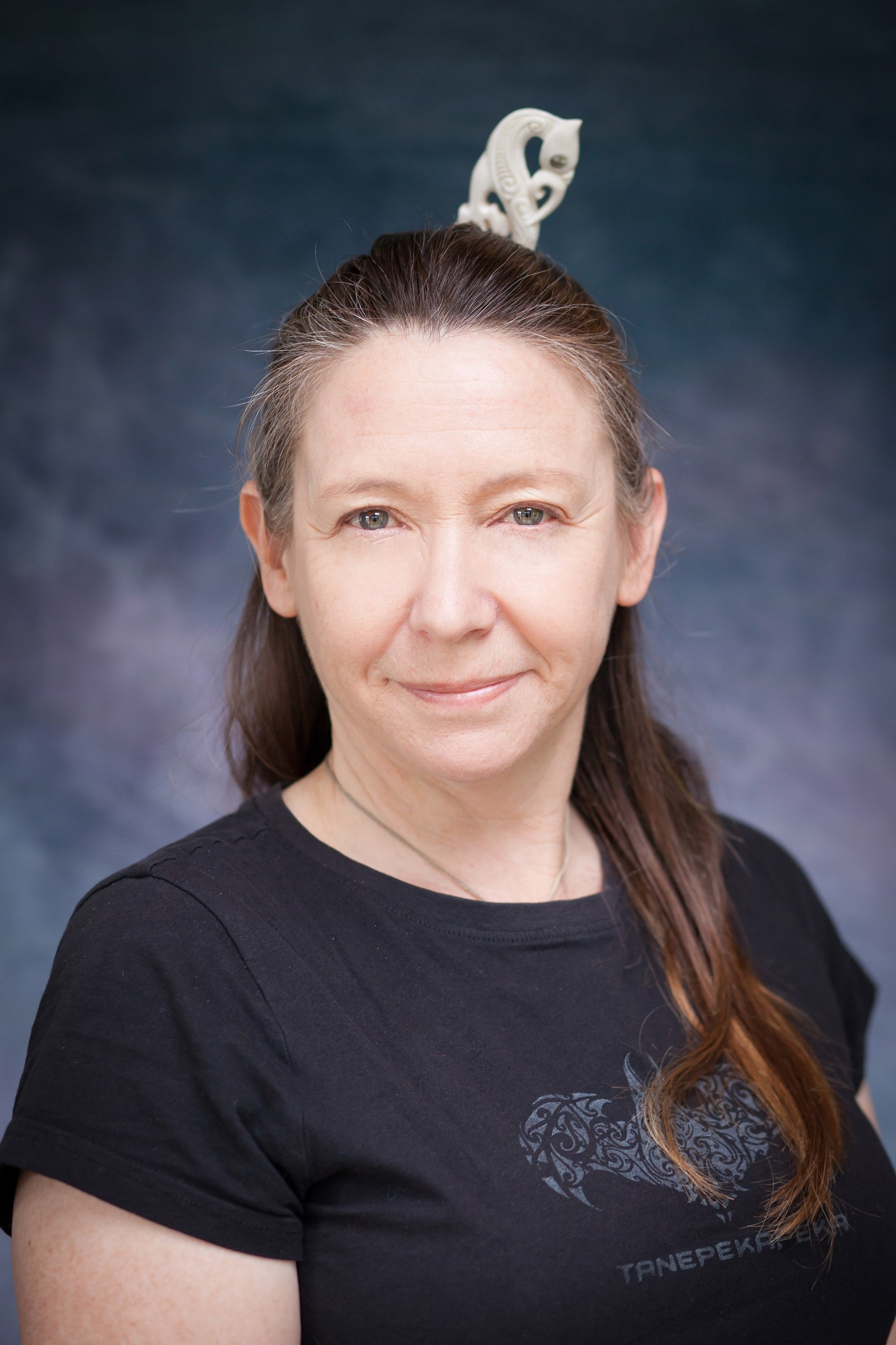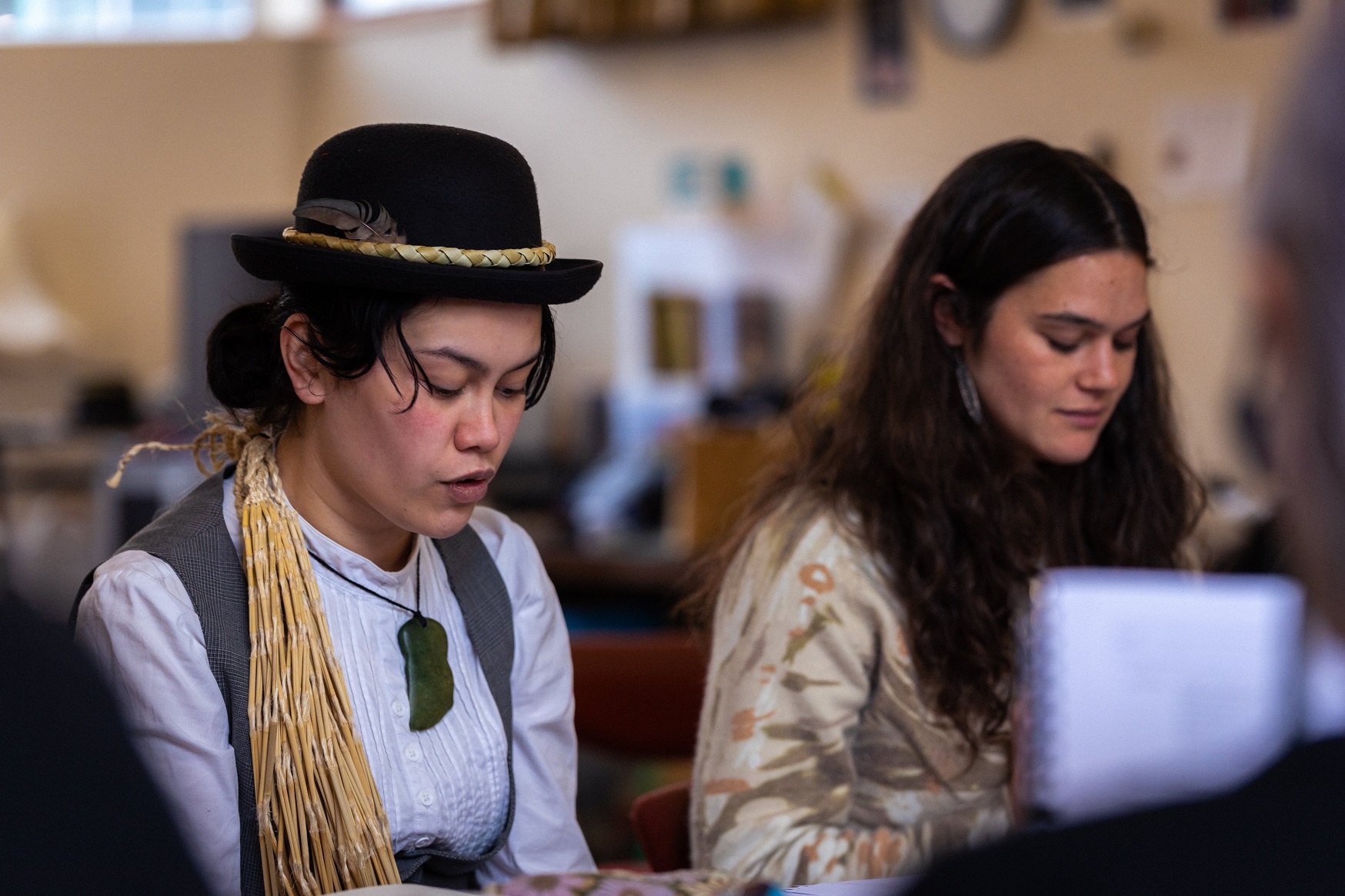
As a little girl, Cindy Diver was told the story of the princess and the whaler.
"It was very exciting, as a kid thinking I’m descended from a princess."
The "princess" was Diver’s sixth-generation great-grandmother Erihāpeti Pātahi and the story was a very romanticised tale of colonialism — a princess badly treated by a whaler. However, the story has always stuck with Diver.
Over the years, other family members have researched her story. Helen Brown included a different story of Pātahi’s life in her book Tangata Ngāi Tahu.
That story resonated with Diver, seeming a more likely one, and she talked with other descendants of Pātahi, including Prof Angela Wanhalla.
"It was like jigsaw-making, of what could be potentially be the actual story of what happened to her — it’s so much more interesting than being the victim of a mixed-race marriage that didn’t work.
"So I went down this rabbit hole of enjoying just how fierce this woman was, how she broke convention, how she’s an example of pre-colonial feminism that people aren’t aware of.
"The agency Māori women had was greater than the missionaries wanted people to think."
It turned out Pātahi travelled around with the whaler and sealers, was a trader and businesswoman who moved to the West Coast, where she mined for gold, fossicked greenstone and became a carver.
"She and her partner were responsible for finding the gold seam in the Greenstone Valley gold rush — they moved this giant piece of pounamu out of the river and revealed the gold.
"She was part of a court case which was one of the first tests of Māori traditional rights over new Pākehā law to do with the Gold Fields Act.
"There were lots of historic moments in New Zealand’s past that she had her foot in.
"Everything I uncovered just showed more resilience and ballsiness of her."
So when she unexpectedly had time on her hands early last year, it seemed the perfect time to put some of these stories down on paper.
"I thought ‘I’m just going to start writing and see what happens’."

"I want to see how far I could push it."
Writing Wahine Mātātoa — the (mostly) true story of Erihāpeti Pātahi was a release for Diver, whose husband was diagnosed with bowel cancer in 2021.
She had put her business into hiatus for three months last year to look after him and her son, but a new treatment worked, changing the trajectory of the disease.
"Suddenly I had all this time.
"It was a catharsis to create something that truly gave me joy.
"It’s a feel-good piece. It’s a comedy with a wee bit of sadness. I didn’t want to pour my grief into it."
She has created a story based on two timelines — contemporary and historical. As a theatre-maker and having a history degree, she was aware how difficult it can be to make historically accurate stories enjoyable and palatable.
"Sometimes it is looking back on past events from a present space that helps the audience go through that journey in a way that is far more interesting and comedic than doing a straight historic setting.
"Having a premise of a descendant looking back, wondering about her tipuna and the decisions she made — it gives us the fantastic opportunity of having a 16-year-olds lens on those events — a contemporary 16-year old’s take on mining on the West Coast as this crazy wild west with silent-film moments."
Diver enjoyed the process of writing and making the two characters work together.
"I got to learn about Pātahi and at the same time explore my craft. It’s terrifying though, telling the story of someone who is real, a tipuna who is related to so many people."
There was also the controversial aspects of Pātahi’s story that saw her fall out with many of her whānau.
"She made some choices in her life that made her quite a rebel, so lots of the stories handed down tried to write her out of the story because of what she did.
"So there was this terrible fear that I’d get to this point and one of her descendants would come forward and say you cannot write about her."
Many of the problems researching Pātahi came from the fact she was "cut off".

"We knew from her down, but not necessarily 100% from her up, and that is really rare."
Trying to discover the mostly true version of what happened that led to that situation has been "exciting and scary at the same time".
Diver discovered Pātahi was betrothed at a young age to a highborn Ngāi Tahu warrior, Tūhawaiki, who went on to become the top chief of the lower South Island.
"It was like marrying Prince William. She was going to marry Prince William and all her family were like, ‘Yes we are going to be part of this royal family’," Diver says.
However, Pātahi met "scruffy looking" Australian whaler Edwin Palmer and decided to marry him, against her family’s wishes.
"She stole a waka and fled and hid so they wouldn’t make her marry him [Tūhawaiki].
"Until everyone got very annoyed with her and eventually Tūhawaiki got another wife."
Palmer did "marry" her and they had two daughters travelled the country following work. They had having amazing adventures, such as when she swam Palmer back to shore after a shipwreck off Sydney, as he could not swim well.
"She saved his life and then not long after that the immigration of good white women into Dunedin began and he started pushing her to the side. He eventually built a house out at Henley, took her daughters with him and said she couldn’t come."
Bereft, she moves to Port Levy in Canterbury, finds a new man and a new life as a trader. She gets baptised as a Christian by Bishop Selwyn and marries her partner. He was not a good fit, so she found another man, Haimona, who was taken to court for his adultery with her.
"This woman was just fearless, she followed her dreams. You’re not for me, I’ll find someone else."
In the end, she goes to the West Coast with Haimona, and the two of them made a life for themselves. They had a large market garden, hosted miners, fossicked for greenstone and gold mined.
"Then, of course, it was the wild West Coast and they lost everything they made when lawless miners would turn up and steal everything and trash their house. They lived out the rest of their lives there."
There have been a few connections uncovered that made Diver think the play was meant to be. The actor playing the character Elizabeth, Milly Manning, from Auckland, is Ngāi Tahu, Waitaha and half-Dutch, the same as the character she is playing.
"Then we found out last week Grace Turipa [of Dunedin], who plays Pātahi, is also a direct descendant as well.

The contemporary character is a descendant of Pātahi who is fierce like her tipuna and just as determined.
"She is a young 16-year-old who has dreams of being an astronaut or a scientist.
"She’s going to get a scholarship and travel but she finds herself pregnant."
The play is divided into three "trimesters" as she decides what she is going to do.
"She uses the story of Pātahi to help her come to the decision of whether to adopt, keep, terminate whatever. A bit like what I was doing, it’s a wonderful act in diversion and denial — she has this huge thing coming and she’s talking about her story because my story is very scary. Why she left her girls? why she did it."
As she was successful with funding applications to Creative New Zealand, the Dunedin City Council and the Ngāi Tahu fund, she has been able to bring together a paid, fully professional creative team including development director Juanita Hepi, from Christchurch, and a production involving audio visuals, lighting, animation and taonga pūoro expert Ruby Solly.
"All these amazing things have come together. I’m really stoked with how it’s going."
Putting the extra tech around the story simply put the "magic" into the story to ensure the audience goes on a "beautiful journey with us".
"Theatre tells stories really well. Theatre in a fully kitted-out theatre can transform and take you to magic places you can’t necessarily do in other ways. It’s the difference between pencil drawing and absolute oils. As a creative, you get to really paint the picture you are trying to say."
The funding also meant she could offer the performances as a koha season (with tickets) and all the southern runaka from the Waitaki travel assistance. It has also enabled them to share their skills with young theatre-makers from Dunedin.
"It would be wonderful to see them here, especially those who have connections to Pātahi."
As it is a development season, it gives the crew a chance to integrate the technical aspect of the show with the stage craft, and smooth out any wrinkles.
After this season, Diver hopes to apply for further funding to take the play to other centres and has created a "stripped-down" version, with less tech, that can be performed in non-theatre spaces.
"If it gets another life, that’s great. I’m just really happy her story has had a chance to be heard."
To see:
Wahine Mātātoa — the (mostly) true story of Erihāpeti Pātahi, Allen Hall, University of Otago, June 21-23.











